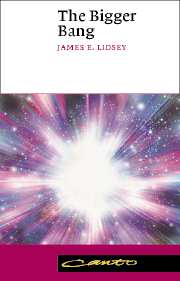Book contents
- Frontmatter
- Contents
- Preface
- Acknowledgements
- 1 The Structure of the Universe
- 2 Why Does the Sun Shine?
- 3 The Expansion of the Universe
- 4 Space, Time and Gravity
- 5 Particles and Forces
- 6 Grand Unification, Higher Dimensions and Superstrings
- 7 The Big Bang
- 8 Beyond the Big Bang
- 9 The Inflating Universe
- 10 The Eternal Universe
- 11 Black Holes
- 12 The Birth of the Universe
- Index
1 - The Structure of the Universe
Published online by Cambridge University Press: 10 August 2009
- Frontmatter
- Contents
- Preface
- Acknowledgements
- 1 The Structure of the Universe
- 2 Why Does the Sun Shine?
- 3 The Expansion of the Universe
- 4 Space, Time and Gravity
- 5 Particles and Forces
- 6 Grand Unification, Higher Dimensions and Superstrings
- 7 The Big Bang
- 8 Beyond the Big Bang
- 9 The Inflating Universe
- 10 The Eternal Universe
- 11 Black Holes
- 12 The Birth of the Universe
- Index
Summary
During the past few decades of research a plausible picture of the universe's most distant past has begun to emerge. The current view is that the universe came into existence some ten billion years ago in the form of a huge, exploding ‘fireball’. This was the big bang.
We are going to discuss some key features of the big bang in this book. In particular, we will look at the central question of just how ‘big’ it really was. But before we can begin our journey back towards the origin of the universe, we must work out our present location within it. Let us therefore embark on a brief sight-seeing tour of the universe.
The Earth belongs to a collection of objects known as the solar system. The central and largest object in this system is the sun. Nine planets, including the Earth, orbit the sun. Pluto is the planet most distant from the sun, and Pluto's orbit may be viewed as the edge of the solar system.
The nearest significant object to the Earth, its moon, is some four hundred thousand kilometres away. For comparison, the distance between the Earth and the sun is roughly one hundred and fifty million kilometres, whereas the average distance between the sun and Pluto is approximately six billion kilometres.
What lies beyond the solar system? As we travel past Pluto, the vastness of empty space soon becomes apparent.
Information
- Type
- Chapter
- Information
- The Bigger Bang , pp. 1 - 7Publisher: Cambridge University PressPrint publication year: 2002
